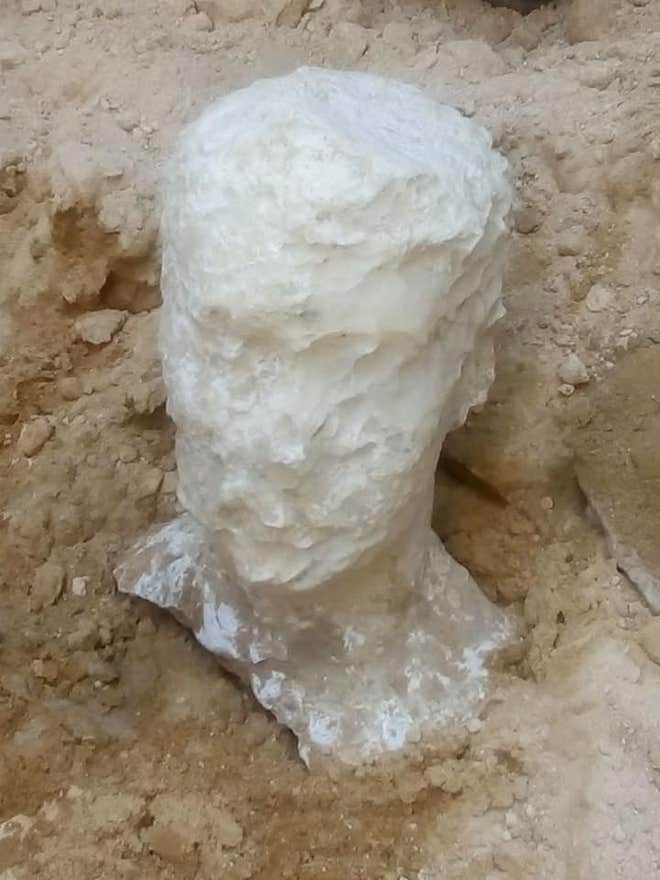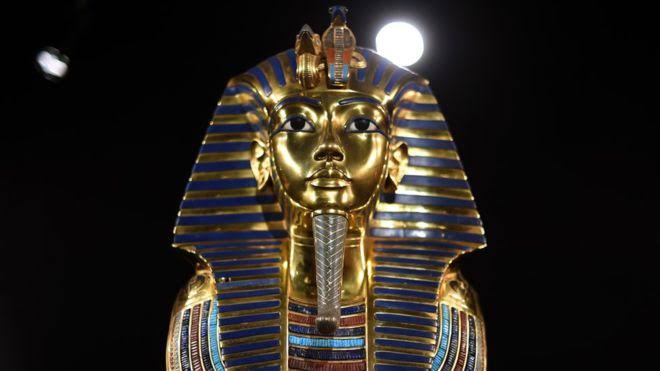Mystery over contents of 9 foot tall ancient Egyptian sarcophagus discovered in Alexandria

Mystery over contents of 9 foot tall ancient Egyptian sarcophagus discovered in Alexandria
Mystery over contents of 9-foot-tall ancient Egyptian sarcophagus discovered in Alexandria.The spooky relic was found inside an ancient tomb and has left archaeologists baffled – because it measures NINE foot long.
Experts say the sarcophagus is built from black granite and is the largest ever found in the ancient city of Alexandria.

The tomb dates back to the Ptolemaic period, which covers the time between 305BC and 30BC. The sarcophagus itself looks particularly foreboding, measuring nine feet long, five feet wide, and six feet tall.
Scientists who helped excavate the site still aren’t sure why it’s so big, because Ancient Egyptians were typically much smaller than modern men – and nowhere near nine feet.
The average height of an Ancient Egyptian man was just over five feet, while women were typically just shy of five feet. Archaeologists say the sarcophagus is covered in a thick layer of mortar.
That’s important because it suggests the creepy coffin has never been opened since the time it was buried.
This means the person (or people) originally buried inside it may still be in there – along with any accompanying possessions. But that’s not all that’s got scientists interested.
The tomb also contained an alabaster head of an unknown man, who may be the person inside the sarcophagus. Scientists will now have to make the important decision of whether to open the sarcophagus or not to find out.
It’s possible they may get around the issue by using X-Rays or CT scans to examine the innards without breaching the case physically. But the only true way to reveal all of the secrets in this sarcophagus is to bust it open.

Opening ancient tombs can be risky business, or so history tells us. It’s a popular belief that a “curse of the pharaohs” is cast on anyone who disturbs the mummy of an Ancient Egyptian person.
This alleged curse is said to affect anyone: not only thieves but scientists and archaeologists too.


It was popularised by the 1922 opening of the tomb of Tutankhamun, which seemingly led to a string of deaths of people associated with the discovery.
The most notable passing was of Lord Carnarvon, the British financial backer of the excavation team who was present at the tomb’s opening. He died four months after the tomb was opened due to an infected mosquito bite.
Another Brit called Howard Carter, who helped open the tomb, also died – albeit more than a decade later. Still, some attribute his death to the pharaoh’s curse.
Historians say there were 11 related deaths within the first 10 years of Tutankhamun’s tomb opening.
Of course, what’s most likely is that the prevalence of the disease in early 20th Century Egypt – and generally worse medical care compared to modern standards – explains why we saw a seemingly high number of deaths.
But the mythical curse may be enough to put some archaeologists off opening this new sarcophagus.